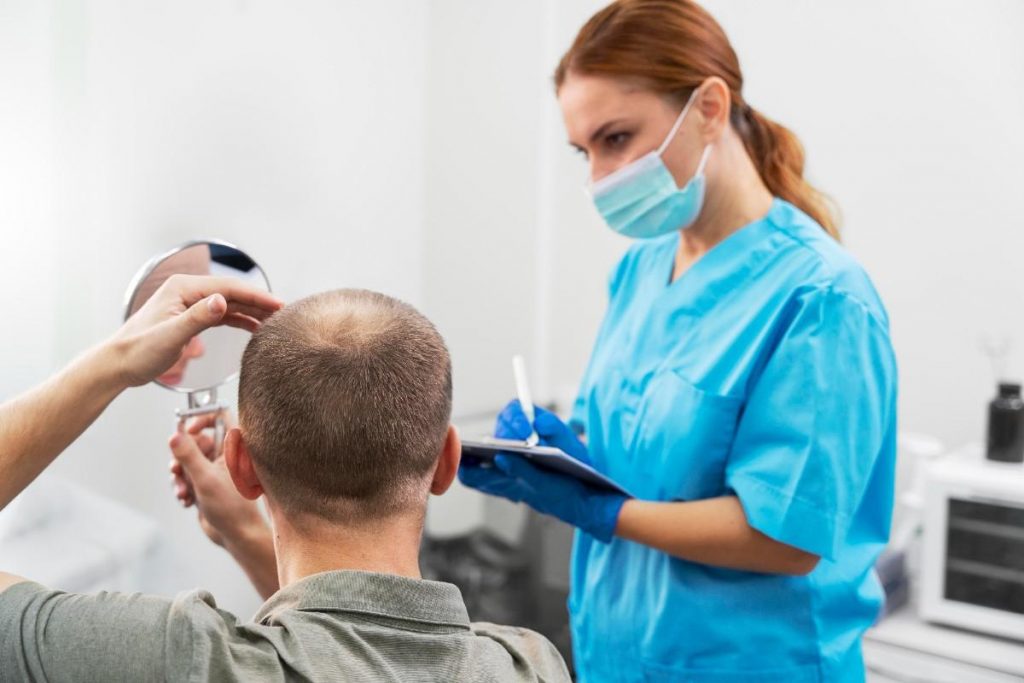
Hair transplantation offers a beacon of hope for those experiencing hair loss. It’s a transformative procedure, which restored confidence and self-esteem. Post-transplant phase is just as crucial as the procedure itself. In this article, we discuss the dos and don’ts after a hair transplant.
Things to Do After a Hair Transplant
This includes the recommended post-treatment care instructions. Some of them are:
Gentle Washing: In the initial days following a hair transplant, gentle care is important. Use a mild, sulfate-free shampoo recommended by your dermatologist or the skin clinic in Kochi. Avoid vigorous rubbing or massaging of the scalp, allowing the newly implanted grafts to settle without disruption. Avoid hot showers, as hot water can irritate the scalp.
Avoiding Direct Sun Exposure: Shield your scalp from direct sunlight during the early post-transplant weeks. If sun exposure is unavoidable, wear a hat or use a scarf to protect the treated area. Sunscreen, as recommended by your dermatologist, can also be applied.
Balanced Diet and Hydration: A well-balanced diet rich in vitamins and minerals contributes significantly to overall hair health. Stay hydrated, ensuring your body receives the essential nutrients required for optimal hair growth. Your dermatologist or a nutritionist can provide personalized dietary recommendations.
Regular Follow-Up Appointments: Maintain regular follow-up appointments with your dermatologist. These visits allow for monitoring the progress of the transplant, addressing any concerns promptly, and receiving further guidance on care practices tailored to your specific needs.
Protective Hair styles: Avoid tight hairstyles that may cause tension on the scalp, and opt for loose styles that do not put stress on the transplanted areas. Allow your hair to fall naturally, avoiding the use of hair accessories that could potentially damage the newly transplanted follicles.
Medications: Stick to the prescribed medication schedule. Skipping medications may affect the healing process.
Scalp Massage: Incorporate gentle scalp massages into your routine to enhance blood circulation. This promotes the delivery of nutrients to the hair follicles, aiding in the healing process and fostering healthy, robust hair growth. Refrain from chemical treatments such as colouring or perming for an extended period post-transplant. Chemicals can be harsh on the delicate newly transplanted hair, potentially causing damage and hindering the healing process.
Keep a record of your hair growth progress: Take regular photos to visually document the changes and celebrate the milestones achieved. Tracking progress not only boosts morale but also helps you and your dermatologist make informed decisions about ongoing care.
Staying Informed: Stay informed about the latest advancements in post-transplant care. Attend workshops, webinars, or seminars organized by the skin clinic in Kochi or relevant organizations. Being knowledgeable empowers you to make well-informed decisions regarding your hair care routine.
Community Support: Join online forums or communities where individuals share their post-transplant experiences. Connecting with others who have undergone similar procedures can provide valuable insights, emotional support, and tips on maintaining optimal hair health.
Conclusion
In conclusion, the journey of caring for your hair post-transplant is a commitment to lifelong hair health and vitality. With the guidance of a reputable skin clinic in Kochi and the expertise of your dermatologist, you can navigate the post-transplant phase with confidence.
Patience, consistency, and personalized care are the cornerstones of a successful post-transplant hair care routine. By embracing these tips and maintaining a strong partnership with your dermatologist, you are not only ensuring the success of your hair transplant but also fostering a lifelong relationship with healthy, beautiful hair.